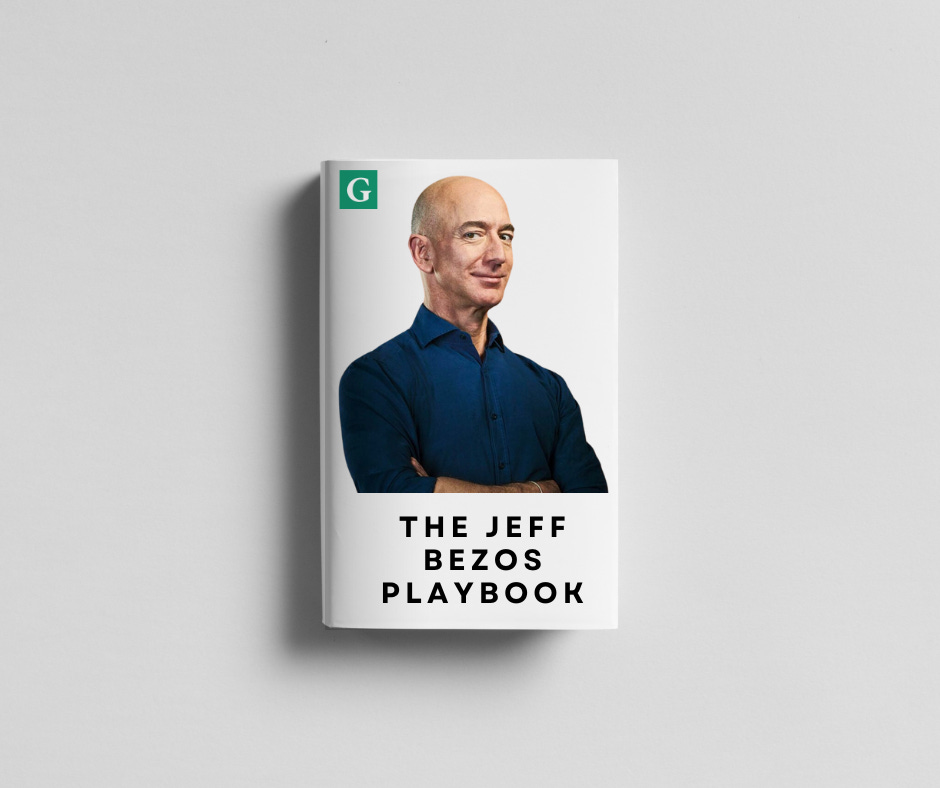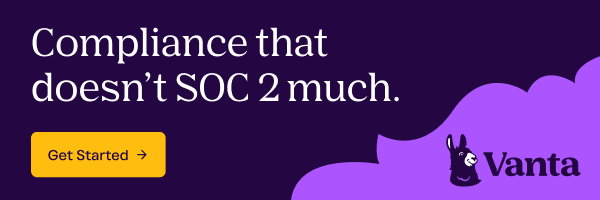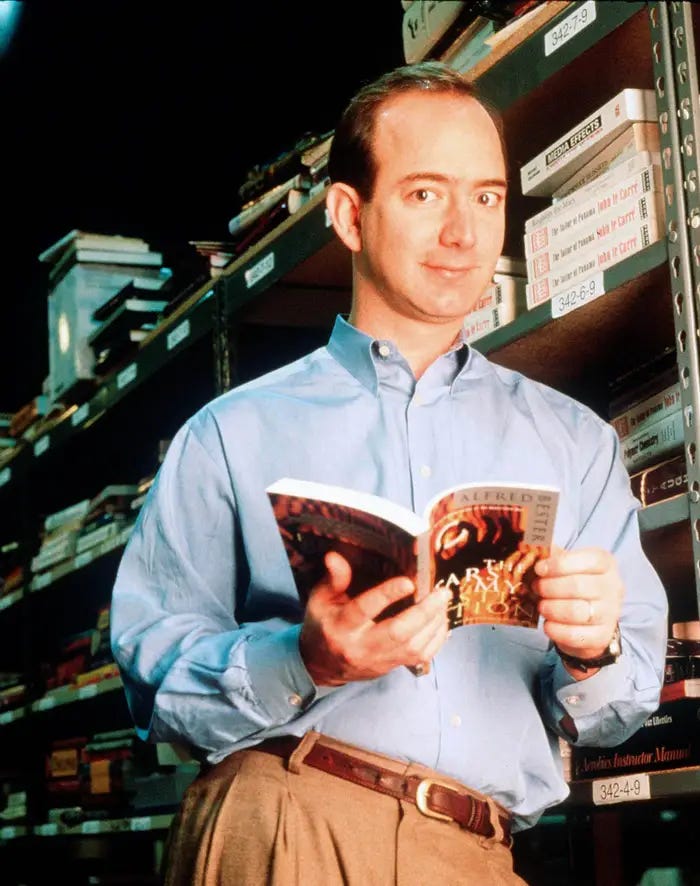🌟 Hey there! This is a subscriber-only edition of our premium newsletter designed to make you a better founder, investor, and technologist. Members get access to the strategies, tactics, and wisdom of exceptional investors and founders.
Friends,
Every career is a sort of game. There is the game of the trial lawyer, defined by clear wins and losses; the game of the academic, measured in papers, citations, and tenure; the game of the venture capitalist skewed toward a few lop-sized decisions, that take a decade to come good.
No game requires as much adaptation as that of the successful startup CEO. Within a matter of years, the primary player may go from bolting meals in front of a grubby laptop to testifying before Congress, from elective poverty to obscene wealth, from a familial embarrassment to one of the most powerful people on the planet.
Though Jobs may be more visionary and Musk more technologically adventurous, when it comes to sheer gameplaying and the pure strategy of innovation, Bezos may be the best of all. Over the past 31 years, the former D.E. Shaw vice president progressively transformed a fledgling online book-selling business into a category-busting behemoth spanning e-commerce, logistics, cloud computing, consumer hardware, publishing, grocery, robotics, and entertainment. Remarkably, the business that powers your EC2 instance is the same one that delivers your artisanal kefir and produced The Marvelous Mrs. Maisel. Bezos has also added businesses to his personal conglomerate, launching SpaceX rival Blue Origin and buying the then-embattled publisher, The Washington Post. This is a concoction that looks insensible to the layperson but, in fact, follows the deep logic of a strategic genius.
Business obsessives may believe they know this tale. But in studying Bezos over the past couple of months, I’ve been consistently surprised by how the most frequently repeated lessons (“be customer-obsessed, not competitor-obsessed”) often tell less than half the story. The story of Amazon and Bezos’s management is not just of “two pizza teams” and “working backwards,” though these are important. It is a tale of grand strategy – e-commerce entrepreneurship by way of Sun Tzu’s The Art of War. Principles are immutable until they are not; rivals are friends until they are crushed; misdirection shields the best opportunities from competitors.
Our piece will cover these examples and many others. It is part of The Generalist’s ongoing series of managerial “playbooks” – the first version of which analyzed Elon Musk. As with that piece, our aim is to reveal the real strategies great founders use to build their businesses. These are often uncomfortable and in direct conflict with traditional managerial advice. However, if you believe progress depends on innovation, as we do, then understanding these principles, foibles included, is not only interesting but essential.
Many sources were used to create this playbook. The Everything Store and Amazon Unbound by Brad Stone were especially valuable. If you’re interested in Amazon’s history, I'd highly recommend them. Working Backwards, The Amazon Way, and Invent and Wander, a compilation of Bezos’s shareholder letters and speeches, were also instructive.
Here is the Jeff Bezos Playbook:
Aggressively overserve customers, but don’t be a fool
Invent constantly and encourage failure
Collaborate with your enemies so you can more easily crush them
Get big fast, then starve out your rivals
Think from primitives, then control them
Hide the gold mine
Attract missionaries with a call to adventure
Cultivate insecurity to maintain high standards
What to expect
A 14,000+ word playbook of the ultimate corporate strategist
8 core principles of Jeff Bezos’s management
27 strategies Bezos used to turn Amazon into a behemoth
The surprising inspiration for AWS
Bezos’ framework for hiring “missionaries” over “mercenaries”
The moves Bezos used to keep competitors away from AWS for 7 years
The tactics and nuances of how Bezos neutralized strong competitors
Over 120 hours of research and five books distilled
…and much more. To unlock the full playbook and learn the techniques of a master strategist, join our premium newsletter today.
Brought to you by Vanta
As a startup founder, finding product-market fit is your top priority. But to land bigger customers, you need security compliance. Obtaining your SOC 2 or ISO 27001 certification can open doors—but it’s time-consuming, and pulls you away from building and shipping features.
That’s where Vanta comes in. Vanta is the all-in-one compliance solution that helps startups get audit-ready fast and build a strong security foundation.
Vanta automates the manual tasks that slow you down, helping you streamline your audit. The platform connects you with trusted partners and offers a marketplace for essentials like pen testing. So, whether you’re closing your first deal or setting the stage for growth, Vanta makes compliance easy.
Over 10,000 companies, including many Y Combinator and Techstars startups, trust Vanta to handle compliance so they can focus on what they do best.
Ready to make compliance simple? Get started with Vanta today.
1. Aggressively overserve customers, but don’t be a fool
If there is one phrase you associate with Amazon, it is “customer obsessed.” Throughout its history, the e-tailer has emphasized its commitment to going above and beyond to serve its end users.
From Amazon’s beginning, Bezos prioritized overserving buyers, often incurring significant financial risk and forgoing short-term profits in the process. The dividends of that strategy are clear today – Amazon offers superior speed and service when compared to virtually any of its US or European rivals. (In other geographies, regional players provide a better service; for example, Mercado Libre in Latin America or Coupang in South Korea).
As the anecdotes below show, Bezos obsessed over the customer, even when he didn’t need to, stressing the business in the process. It can be easy to take the wrong lesson from these stories, to believe wholly in the supremacy of the customer. In reality, even Bezos had his limits. When a sufficiently large opportunity arose that worsened a core aspect of the user’s experience, Bezos was pragmatic enough to institute it.
Do not wait for competitive pressure to improve your offering
Many companies wait for a footrace to begin before they start sprinting. Why curb your margins and fragment your resources if you don’t have to?
One of Bezos’s defining managerial traits is that he never waits for external pressure to force product improvements. There are, inevitably, examples in which Amazon has to play catch-up in one area or another, but as much as possible, Bezos forced the organization to stress itself endogenously.
From almost the moment it launched, Amazon was playing catch-up. In its first week, it sold $12,000 worth of books, shipping $846 worth of them. “Within the first few days, I knew this was going to be huge,” Bezos would later say. “It was obvious that we were onto something much bigger than we dared to hope.”
Instantaneous product-market fit reduced the uncertainty of Bezos’s venture, but created problems of its own. “We had so many orders that we weren’t ready for…we had no real organization in our distribution center.” Staff worked on their hands and knees, packing boxes.
A week after launching, Yahoo founders Jerry Yang and David Filo reached out, offering Amazon pride of place on its home page, further spiking demand. Within its first month of operations, Amazon had customers in 50 states and 45 countries.
It would be easy in such circumstances to find a shortcut, or at least, engineer a breather. What about temporarily throttling orders? Or increasing the prices?
Bezos did neither. Instead, he pushed the company to offer a 30-day return policy, a wildly generous proposal. Amazon was in the midst of a logistical labyrinth, and no competitive pressure demanded such a feature, but Bezos pushed for it all the same. The only way buying on the internet, at scale, would work was if consumers felt taken care of.
Another example came when Bezos prepared to launch the Kindle, Amazon’s now famous e-reader. At the time, e-readers were considered something of a dead category. In 1997, six years before founding Tesla (and giving over control to Elon Musk), Marc Tarpenning created the Rocketbook, an early attempt in the category. In fact, Amazon considered investing in Tarpenning’s startup but demurred when the Rocketbook founder refused to give Bezos exclusive rights to the product. Instead, Tarpenning raised capital from Len and Stephen Riggio, suzerains of Barnes & Noble.
Rocketbook was not a catastrophe. It sold 20,000 units in its first year and earned praise from Oprah Winfrey and Wired magazine. Fearful of the impending dot-com collapse, Tarpenning sold the company for $187 million, after which point the project rotted and eventually closed down. The result was a loss of faith in the viability of the entire category. As Brad Stone writes in The Everything Store, “E-books seemed like a technological dead-end and a hopeless medium–to almost everyone.”
Bezos was the exception. In 2004, he formed a team to build a first-class e-reader device. Three years later, Amazon unveiled the Kindle – an imperfect but revolutionary device. Critical to its success was a daring pricing strategy. Rather than pricing e-books at parity with printed ones, Bezos demanded they retail for $9.99.






